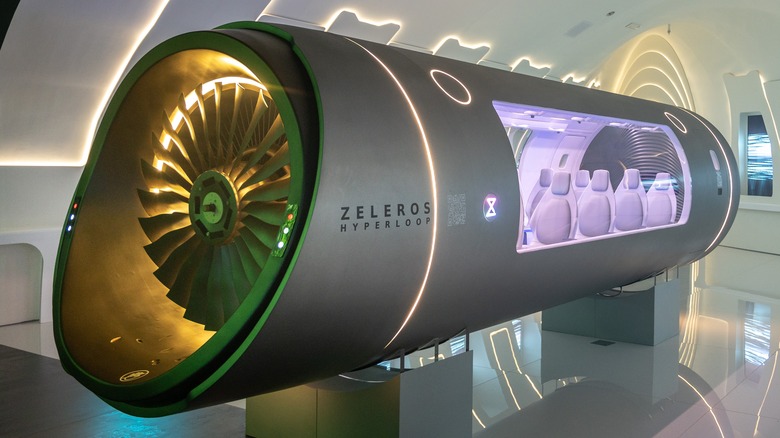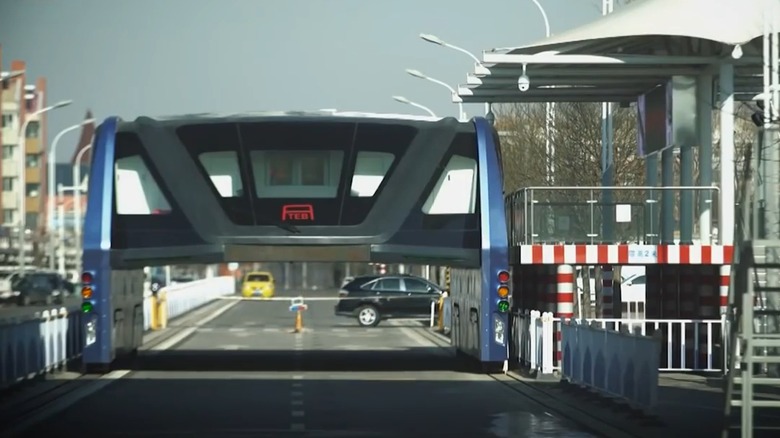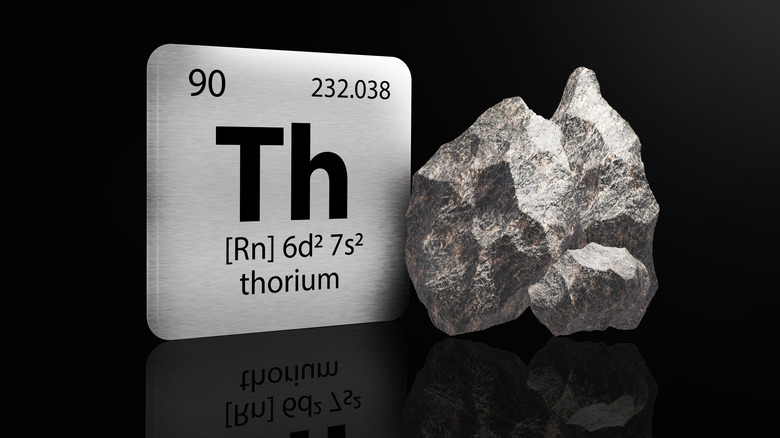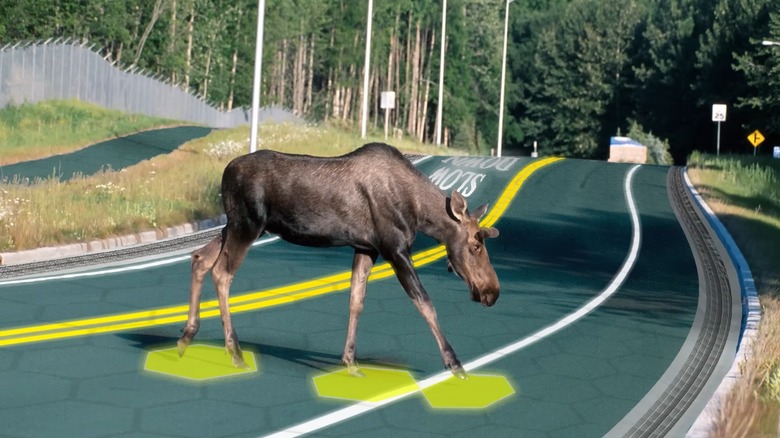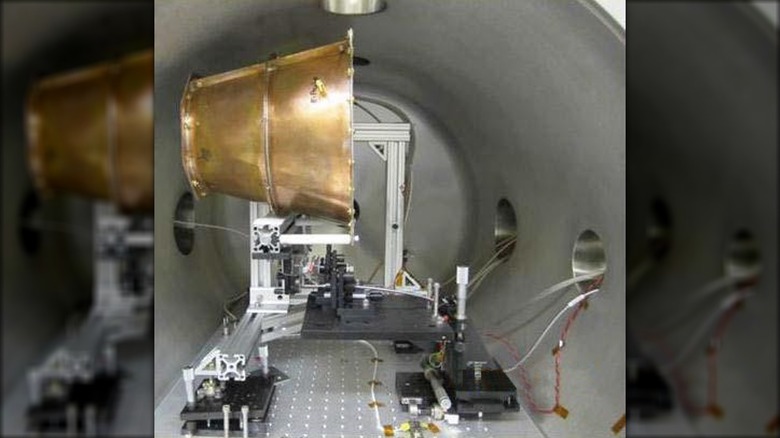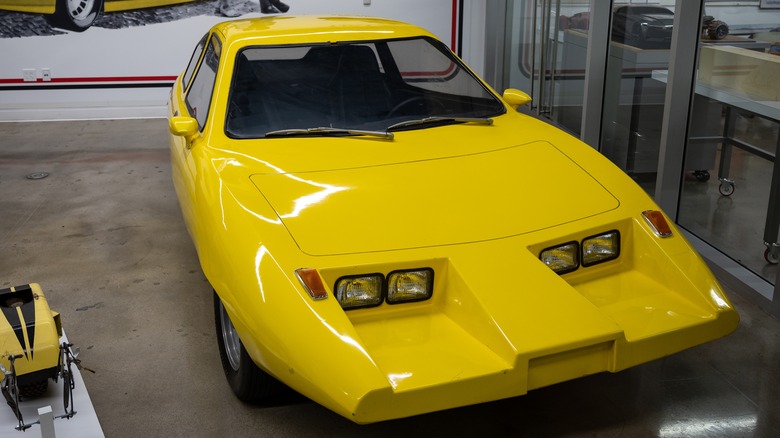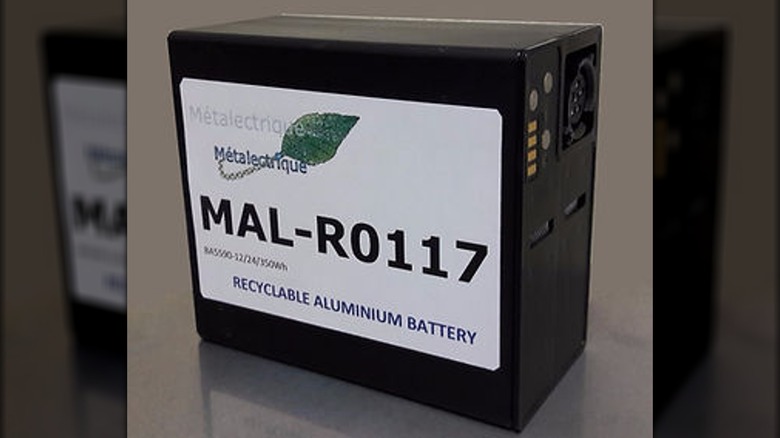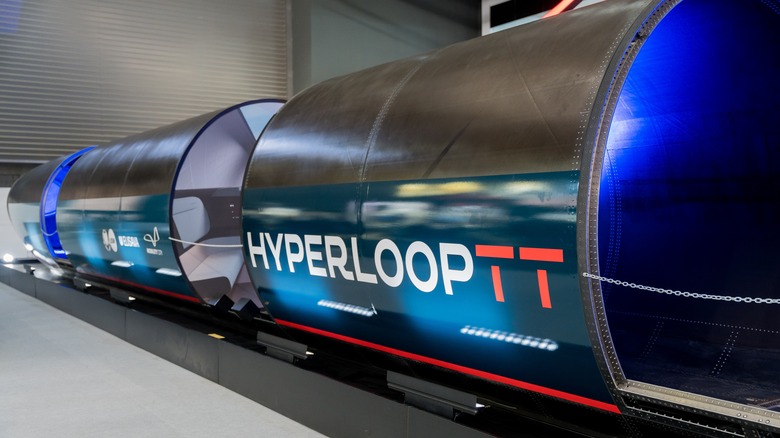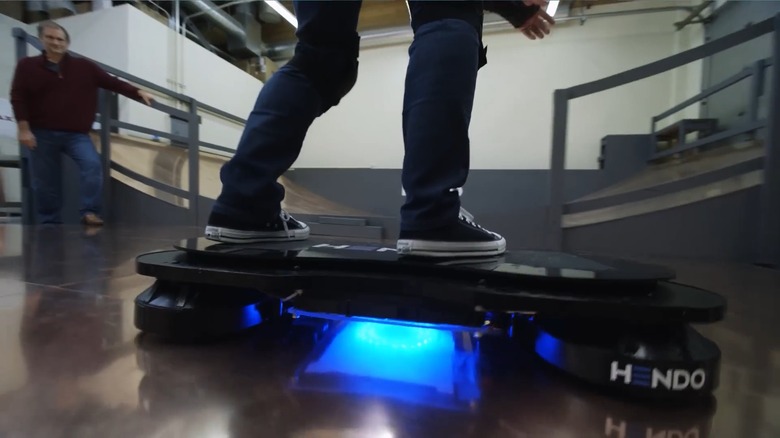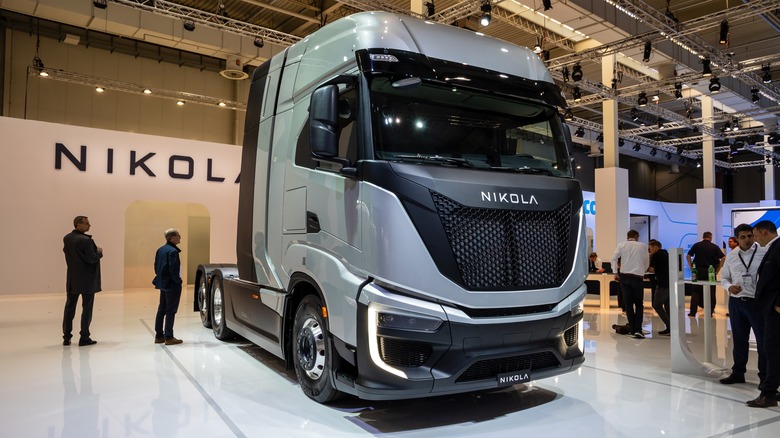10 Transportation Inventions That Were Too Good To Be True
Mankind is always envisioning new methods of transportation. Sometimes faster, other times more efficient, and usually a lot cooler. However, all of these ideas are worthless without the technology to bring them to life. Discoveries such as superchargers and all-wheel drive wouldn't have revolutionized the automobile industry, let alone existed, without engineers who fully understood the concepts they were dabbling in. Sadly not all inventions have the same potential — or any for that matter.
Most innovations start with a good idea, but sometimes a concept is flawed and holds little to no merit. Depending on the process, the inventor usually realizes this unfortunate reality during the testing phase, albeit not always before they have begun promoting their creation. However sometimes the "inventor" knows full well they've created a pointless product and promoted it because they wanted to score some easy publicity.
While transportation-centric inventions get a lot more attention due to growing concerns over increasing gas prices and car emission-fueled climate change, this attention serves as a double-edged sword. If the invention is legit, more promotion usually means more sales. If the vehicle runs on snake oil, people might still buy it, but there will likely be consequences down the line. Here are 10 transportation inventions that didn't live up to the promises of their creators, mostly because they were spouting hot air.
Transit Elevated Bus
While many people like to take the bus, nobody likes to navigate around buses in their own vehicles. They're tall, slow, and take up a lot of road. If only there was a way to easily get around those buses. Such dreams will probably only remain just that, despite the efforts of some people.
In 2010, China's Shenzhen Huashi Future Parking Equipment unveiled their concept for an elevated bus, dubbed the Transit Elevated Bus. At 22 meters long and 7.8 meters wide, the vehicle could fit up to 300 commuters. True to its name, the bus stood on wheeled stilts with enough space underneath to allow for two-lane traffic. The vehicle looked like it belonged on the sci-fi streets of planets like Coruscant or Cybertron, not China.
A model of the elevated bus was officially unveiled in 2016 and tests began shortly afterwards, although they were quickly canceled. Even though the vehicle's design sounds like it could have helped reduce air pollution, those potential boons didn't outweigh safety concerns. Many people questioned whether the bus could handle turns, and while care was taken to ensure the average car could pass under the bus, the same attention wasn't used to ensure the bus could pass under foot bridges.
The final nail in the coffin came in 2017, when Chinese authorities indicted members of the manufacturing company and accused them of illegal fundraising. Turns out the project was one big scam.
Thorium-powered car
Nuclear energy is a powerful tool that can output a ton of energy, which is why many of the world's most advanced submarines and aircraft carriers rely on nuclear power plants. One might wonder if we could harness the power of the atom for commercial vehicles. Rolls-Royce is currently working on that idea, but another firm seems to have beaten it to the punch — albeit with an idea that's a meltdown in waiting.
In 2011, the Connecticut-based Laser Power Systems claimed it was developing a car that can run on thorium. According to the company's CEO, Charles Stevens, one gram of the radioactive material can produce energy equivalent to about 7,400 gallons of gas, and each car would be equipped with eight grams worth, enough to power the car for 100 years. How would the element transfer its energy? A laser that would heat water to produce steam, which in turn would spin miniature turbines. All in all, it sounds like how normal nuclear reactors work – except for the thorium, that is.
One of the few organizations to look into Laser Power Systems' claims was the fact-checking network SeeCheck. Members contacted Professor Davor Grgic of the University of Zagreb's Nuclear Engineering course. According to Prof. Grgic, while thorium is more abundant than uranium, you can't make nuclear reactors out of it. The best you can do is put thorium in breeder reactors to create uranium. Plus, the very notion of a thorium-powered laser is pure fantasy. You have a better chance of driving a car designed by Thor than owning a car that runs on thorium.
Solar Roadways
Solar panels are a difficult proposition, not because they are ineffective -– they help improve air quality and can lower your energy bills -– but because they can be inefficient if installed improperly. A solar panel needs a ton of sun to work, and what gets more sun than a roadway? If only.
The Solar Roadways project began life as an Indiegogo project to replace roads with drivable surfaces that generate electricity through photovoltaic cells, i.e. solar panels. The conceptual technology, helmed by the fittingly-named Solar Roadways Incorporated, consists of solar panels housed in hexagonal drive-safe glass pods. Each solar roadways cell also contains LEDs that, hypothetically, can serve as adaptive warning signs. Picture roads that have words like Stop and Slow Down permanently painted on, but make them less permanent and capable of changing the warnings depending on traffic patterns, and you should get the idea.
Unfortunately (but predictably), everything that you think could have gone wrong with Solar Roadways did. Solar Roadways Inc. installed a test bed to demonstrate the panels' potential, but it instead did the opposite. Each photovoltaic hexagon generated less electricity than promised, and the LEDs either failed mechanically or failed to be visible. Oh, and did we mention that despite promises to the contrary, the sample solar roadway couldn't melt away snow that obscured the interior panels and lights? While Solar Roadways Incorporated hasn't given up hope, the company has a long way to go in meeting its stated goals.
EmDrive
The dark secret of spaceships in science fiction is that they all defy the laws of physics. Even if we invented a power source that rivaled the warp core reactors of "Star Trek," we'd still need engines that transcend the rules of reality as we know them. If someone says they've invented one, they're probably mistaken.
The quantum vacuum virtual plasma thruster better known as the EmDrive was touted as a revolutionary form of propulsion that would let the space exploration industry take a much-needed leap to lightspeed -– figuratively, of course, not literally. The invention consisted of a thruster that, according to a test carried out by NASA scientists, could propel itself by reflecting microwaves within itself. On the surface, this sounds like the basis of a technology that could rewrite everything we know about physics and the conservation of momentum, but in reality, it only demonstrated the importance of peer review.
While the NASA study seemingly claimed one thing, subsequent tests refuted its results. Researchers at the Institute of Aerospace Engineering at the Dresden University of Technology in Germany concluded that the thrust was actually the product of electromagnetic interference, likely some interaction between the EmDrive's power cables and the Earth's magnetic field. When the team responsible for the original study repeated the experiment several years later with new equipment, they realized just how faulty their original conclusion had been. The adage "measure twice, cut once" applies to more than just carpentry.
The Dale Car
Many inventions come from a place of benevolence. Even if the creator profits off their inventions, they still usually want to improve the lives of others. However, when disaster strikes, less reputable people often take advantage of the situation, especially when good Samaritans are trying to improve the lives of those impacted.
During the 1970s, many countries had their first brush with gas shortages. In response, some inventors tried to create new vehicles and motors that would require less fuel. One of the most notorious results was the Dale Car, a three-wheeled two-seater designed by Dale Clift. However, the main force behind the Dale Car's publicity was self-proclaimed entrepreneur Geraldine Elizabeth Carmichael. She claimed the car could get 70 miles to the gallon and would only cost $2,000. Unfortunately, none of those statements would turn out to be true.
Even though Carmichael collected money from investors, the most that came of the Dale Car project was an underpowered prototype that couldn't keep all its wheels on the ground during sharp turns. But don't blame Clift; he genuinely thought he was helping the average car owner. Instead, blame Carmichael — or should we say Jerry Dean Michael? Turns out Carmichael was an infamous career con-artist. To throw off the FBI, Michael/Carmichael faked their own death, changed identities (and genders), and used this new persona to sell the Dale Car to investors.
Vegas Loop
Traffic jams are the bane of every commute since they slow transportation to a glacial crawl and can induce bouts of claustrophobia. Many people think they have solutions that can cure the blight of traffic jams, but more often than not, these are just more traffic issues waiting to happen.
The Las Vegas Convention Center Loop, better known as just the Vegas Loop, was Elon Musk's concept for an efficient underground path that would ferry over 90,000 drivers every hour between various Las Vegas landmarks. One of the Vegas Loop's main features is that it could let users bypass traffic jams. Moreover, the loop was supposed to be the first of many such systems across the United States. While the final product should be fully autonomous, the current iteration requires human drivers.
So far, the Vegas Loop has run into several snags that have raised doubts about its viability, and while early proofs of concept were convincing, there are plenty of concerns about the efficiency of single lane tunnels. Beyond that, progress been slow and the loop has been clogged by, irony of ironies, at least one traffic jam. Even if similar underground loops pop up around the United States, you might want to think twice about using them when you are in a rush.
Metalectrique Aluminum-Air Battery
Electric vehicles have come a long way. Today, you can easily find an inexpensive EV with a travel range that rivals or eclipses gas-powered rivals. However, the rumor remains that electric vehicles need to be charged after traveling a short distance. While some developers have tried to create EV batteries that last longer than normal, there's always a give and take.
Several years ago, ex-Royal British Navy engineer Trevor Jackson invented his own version of the aluminum-air battery. As its name suggests, it is a battery that is powered by aluminum dipped in an electrolyte solution. This combination produces a reaction between aluminum and air that generates electricity. Jackson's take on the aluminum-air battery, which uses a new electrolyte formula, is lighter than your standard electric vehicle's lithium-ion battery and can last over four times as long.
While Jackson signed on with Austin Electric –- an engineering firm in Essex –- to start production, some car engineers are skeptical about the technology. While aluminum-air batteries can utilize low-purity metals, such as those you find in recycled cans, the devices are non-rechargeable. Once the aluminum-air battery is drained, you have to replace it. The aluminum can be recycled to create another battery, but that still means owners could potentially have to take their cars in for servicing when gas and lithium-ion battery-powered cars would just need a quick refueling. We shall see in the near future if Trevor Jackson's battery is all it's cracked up to be.
Hyperloop
Before the invention of the internet, many companies relied on pneumatic tubes to rocket messages between rooms and staff members. It was fast and effective, and inventors have been trying to apply the technology to human transportation with little to no success. That record of failure doesn't look like it will change anytime soon.
Several years before Elon Musk revealed the Vegas Loop, he proposed a different form of rapid transportation, one which also had the word loop in it – the Hyperloop. The concept was basically a series of subway pods in low-pressure tubes that could, thanks to magnetic propulsion and low air resistance, travel up to 760 mph. However, instead of reinventing transportation, the Hyperloop project only demonstrated the veracity of the phrase "the best laid plans of mice and men often go awry."
Despite the best efforts of numerous partner groups, nobody could ever develop a prototype that approached Musk's proposed speeds. The closest anyone got was the Technical University of Munich's Hyperloop Project, which set the record for traveling at 288 mph. While nations such as China and the Netherlands are trying their own Hyperloop projects, the Hyperloop dream is all but dead in the U.S. In 2023, the premier transportation company behind the Hyperloop project, Hyperloop One, shut down and liquidated all of its assets. Some American companies are still trying to make the Hyperloop a reality, today that dream seems more unlikely than ever.
Hendo Hoverboard
Hoverboards are cool. It is scientifically impossible to watch the hoverboard chase scene from "Back to the Future Part II" without wanting to ride one. Some people capitalized on this desire with fun tongue-in-cheek hoaxes, while others have tried their darndest to create actual hoverboards. Until they didn't, anyway.
In 2014, a company Hendo Hover, which was a part of another company called Arx Pax, started a Kickstarter project for what was touted to be the "world's first real hoverboard." The company promised a full-blown hoverboard experience that used magnets to achieve levitation within a specialized skatepark. Low-tier backers would only get hoverboard replicas or a five-minute test drive, depending on their reward of choice, while high-tier backers would receive working hoverboards. Best of all, Hendo Hover promised delivery in 2015.
However, as is crowdfunded project tradition, Hendo Hoverboards didn't ship on time. Some lucky testers got to ride a prototype in 2016, but that was the last anyone heard of the company. By 2017, Hendo Hover had completely dropped off the map. Today, none of Hendo Hover's social media channels have been updated in several years, and their last posts only mention Arx Pax's Self-Adjusting Floating Environment (SAFE) Foundation System technology. Granted, the hoverboards used SAFE technology, but even the main website for Arx Pax is suffering from similar issues of non-info. Our best guess? Arx Pax went under and took Hendo Hover with it.
Nikola Motors
Hydrogen is a powerful resource with enormous potential. The element is one of the most abundant in the universe, and some of the most powerful bombs in the world use it for cores. While hydrogen sounds like it could be the next big transportation revolution, so far anyone who has made that claim has been full of hot air.
Take, for example, the case of Trevor Milton, who founded the Nikola Corporation in 2014 after exiting his prior company, dHybrid. He enticed partners and investors with what he claimed was a proprietary zero-emission technology that ran off compressed natural gas. Milton stated his engines could power semi trucks capable of hauling 80,000 pounds and only needed to be refueled every 1,000 miles. He even showed off his flagship truck, the Nikola One. However, a few months before the unveiling, Milton announced that his engines would switch from natural gas to hydrogen cell technology, which was the first hint that Nikola Motors wasn't what it seemed.
Not only did Milton's supposed zero-emission engine fail to live up to promises, it turns out it didn't even exist. So how did Milton display a working truck to a live audience? It was a figurative and literal shell of his promises powered by a wall outlet. In 2023, Milton was sentenced to four years in prison for intentionally misleading investors and lying about his motor's capabilities –- and its existence. The irony, of course, is that Nikola Motors is now actually doing better without Milton and working towards fulfilling its promises. Go figure.
